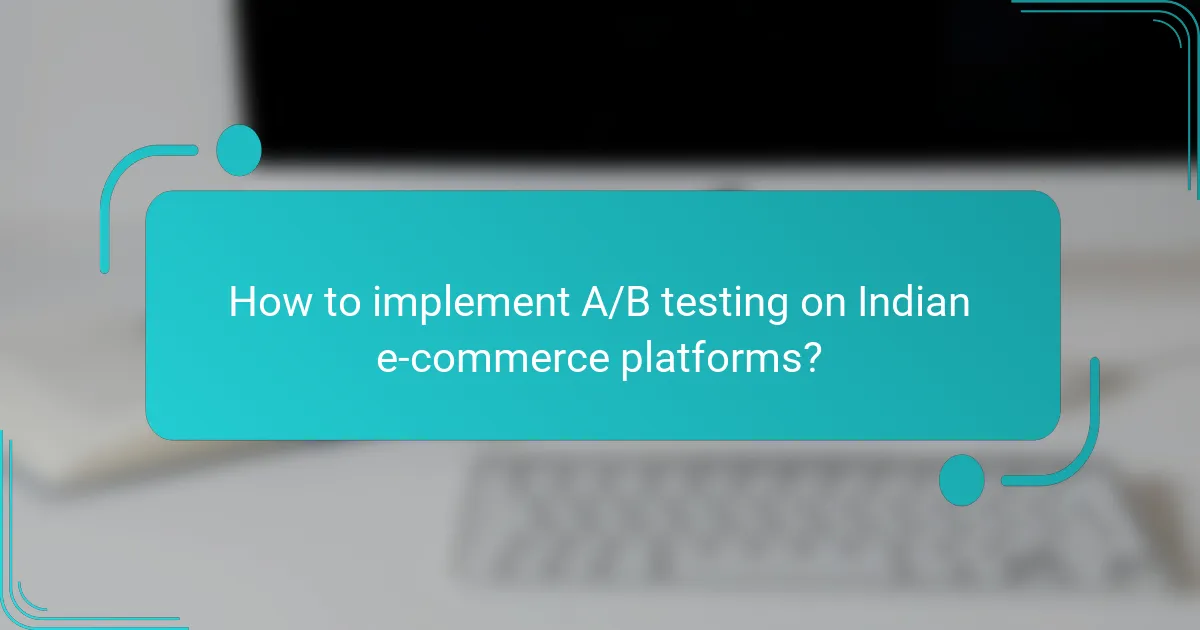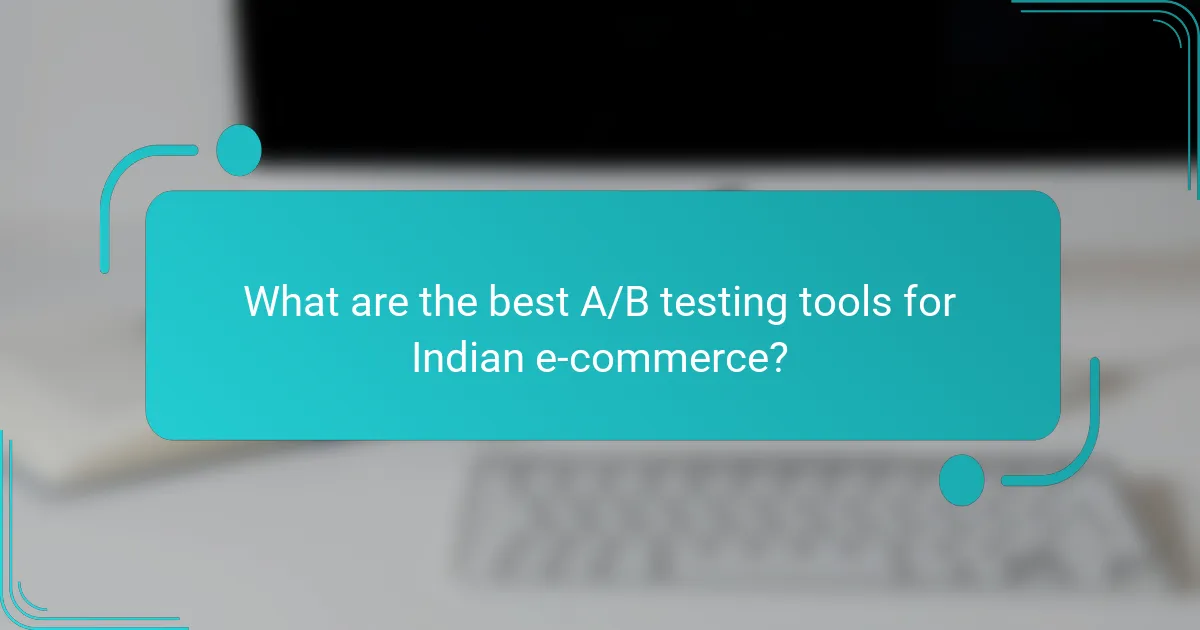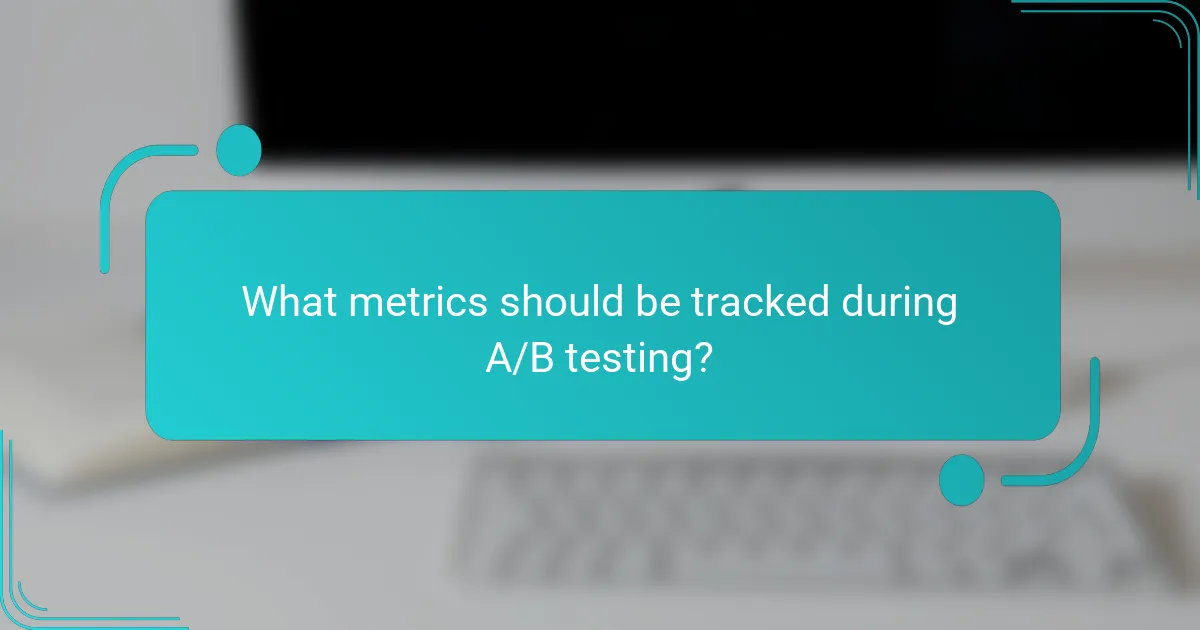A/B testing techniques are essential for Indian e-commerce sites aiming to enhance user experience and boost conversion rates. By comparing different webpage versions, businesses can identify the most effective strategies tailored to the preferences of Indian consumers, ultimately driving sales in a competitive landscape.

What A/B testing techniques are effective for Indian e-commerce sites?
A/B testing techniques for Indian e-commerce sites focus on optimizing user experience and increasing conversion rates. Effective methods include multivariate testing, split URL testing, mobile optimization tests, personalization strategies, and behavioral targeting, each tailored to the unique preferences of Indian consumers.
Multivariate testing
Multivariate testing allows e-commerce sites to test multiple variables simultaneously to determine which combination yields the best results. For instance, an Indian online retailer could test different headlines, images, and call-to-action buttons on a product page. This method can be particularly useful for identifying the most effective layout or content for diverse customer segments.
When implementing multivariate tests, ensure that you have a sufficient sample size to achieve statistically significant results. A common pitfall is testing too many variables at once, which can complicate analysis and interpretation.
Split URL testing
Split URL testing involves creating two distinct URLs for different versions of a webpage to compare their performance. This technique is beneficial for testing major changes, such as a complete redesign of a checkout process. For Indian e-commerce sites, this can help identify which design resonates better with users, ultimately leading to higher conversion rates.
To effectively conduct split URL tests, direct traffic evenly to both URLs and monitor key performance indicators like bounce rate and conversion rate. Be cautious of external factors, such as seasonal sales or promotions, which may skew results.
Mobile optimization tests
Given the high mobile usage in India, mobile optimization tests are crucial for e-commerce success. These tests evaluate how well a site performs on mobile devices, focusing on load times, navigation, and overall user experience. For example, testing different button sizes or layouts can reveal what works best for mobile shoppers.
Ensure that your mobile tests are conducted on various devices and screen sizes to capture a broad range of user experiences. Avoid neglecting mobile users, as poor performance can lead to significant revenue loss.
Personalization strategies
Personalization strategies involve tailoring content and offers to individual users based on their behavior and preferences. For Indian e-commerce sites, this could mean showing region-specific products or recommending items based on past purchases. Personalization can significantly enhance user engagement and increase sales.
To implement effective personalization, leverage data analytics tools to gather insights about customer behavior. However, be mindful of privacy concerns and ensure compliance with data protection regulations.
Behavioral targeting
Behavioral targeting focuses on delivering content or advertisements based on users’ past interactions with the site. For example, if a user frequently browses electronics, they may see targeted ads for the latest gadgets. This technique can help increase relevance and improve conversion rates for Indian e-commerce platforms.
When employing behavioral targeting, segment your audience effectively to ensure that the right messages reach the right users. Avoid over-targeting, which can lead to ad fatigue and diminish user experience.

How to implement A/B testing on Indian e-commerce platforms?
Implementing A/B testing on Indian e-commerce platforms involves comparing two versions of a webpage to determine which performs better in terms of user engagement and conversion rates. This process is crucial for optimizing user experience and maximizing sales in a competitive market.
Choose the right A/B testing tool
Selecting an appropriate A/B testing tool is essential for effective experimentation. Popular tools like Google Optimize, Optimizely, and VWO offer user-friendly interfaces and robust analytics tailored for e-commerce needs. Consider factors such as pricing, ease of integration, and support for mobile testing when making your choice.
For Indian e-commerce sites, tools that support local languages and payment gateways can enhance user experience and yield more accurate results. Evaluate each tool’s features to ensure it aligns with your specific testing requirements.
Define clear objectives
Establishing clear objectives is vital for successful A/B testing. Determine what you want to achieve, such as increasing click-through rates, reducing cart abandonment, or boosting overall sales. Having specific goals helps in designing tests that are focused and measurable.
For instance, if your goal is to improve the checkout process, you might test different layouts or button placements to see which version leads to higher completion rates. Ensure that your objectives are aligned with broader business goals for maximum impact.
Segment your audience
Segmenting your audience allows for more targeted A/B testing, leading to insights that are more relevant to specific user groups. Consider factors such as demographics, purchasing behavior, and device usage when creating segments. This approach helps in understanding how different audiences interact with your site.
For example, you might find that mobile users respond better to simplified layouts, while desktop users prefer detailed product descriptions. Tailoring your tests to these segments can enhance the effectiveness of your findings and subsequent strategies.
Run tests for sufficient duration
Running A/B tests for an adequate duration is crucial to obtain reliable results. A common guideline is to run tests for at least one to two weeks to account for variations in user behavior over time. This duration allows for capturing enough data to make informed decisions.
Be cautious of external factors such as holidays or promotional events that might skew results. Monitor performance metrics throughout the test period to ensure that the data collected is representative of typical user interactions.

What are the best A/B testing tools for Indian e-commerce?
The best A/B testing tools for Indian e-commerce sites include options that cater specifically to local needs and preferences. These tools help businesses optimize their websites by comparing different versions to see which performs better, ultimately driving conversions and enhancing user experience.
Google Optimize
Google Optimize is a free tool that integrates seamlessly with Google Analytics, making it a popular choice for Indian e-commerce sites. It allows users to create A/B tests, multivariate tests, and redirect tests without needing extensive coding knowledge.
To get started, simply set up an account, link it to your Google Analytics, and create experiments based on your website’s goals. A common pitfall is not having clear objectives; ensure you define what success looks like before launching tests.
Optimizely
Optimizely is a robust A/B testing platform that offers advanced features like personalization and multivariate testing. It is particularly well-suited for larger e-commerce businesses in India looking to implement sophisticated testing strategies.
Consider using Optimizely if you have a substantial budget and require detailed analytics. However, be mindful of the learning curve; investing time in training can maximize the tool’s potential. A good practice is to start with simple tests before progressing to more complex experiments.
VWO
VWO (Visual Website Optimizer) provides a comprehensive suite for A/B testing, including heatmaps and user recordings, which can help Indian e-commerce sites understand user behavior better. This tool is user-friendly, making it accessible for teams without extensive technical expertise.
When using VWO, focus on creating hypotheses based on user data to guide your tests. Avoid testing too many variables at once, as this can lead to inconclusive results. Instead, prioritize key elements like call-to-action buttons or product images for effective optimization.
Adobe Target
Adobe Target is a powerful A/B testing and personalization tool that is part of the Adobe Experience Cloud. It is ideal for larger Indian e-commerce companies that require extensive customization and integration with other Adobe products.
Utilizing Adobe Target can yield significant insights, but it comes with a higher price tag. Ensure you have a dedicated team to manage the tool effectively. A practical tip is to leverage its automated personalization features to enhance user engagement based on behavior and preferences.

What metrics should be tracked during A/B testing?
Tracking the right metrics during A/B testing is crucial for understanding user behavior and optimizing e-commerce performance. Key metrics include conversion rate, bounce rate, and average order value, which provide insights into how well different variations of a webpage perform.
Conversion rate
Conversion rate measures the percentage of visitors who complete a desired action, such as making a purchase. For Indian e-commerce sites, a typical conversion rate might range from 1% to 3%, depending on the industry and target audience. Monitoring this metric helps identify which variations effectively drive sales.
To improve conversion rates, focus on elements like call-to-action buttons, product descriptions, and overall user experience. A/B testing different layouts or wording can reveal what resonates best with your audience.
Bounce rate
Bounce rate indicates the percentage of visitors who leave a site after viewing only one page. A high bounce rate, often above 40%, may suggest that the landing page is not engaging enough or relevant to the visitor’s expectations. For Indian e-commerce sites, reducing bounce rates is essential for retaining potential customers.
To lower bounce rates, consider testing different headlines, images, or loading speeds. Ensuring that the landing page aligns with the ad or link that brought users there is also vital for keeping them engaged.
Average order value
Average order value (AOV) reflects the average amount spent by customers per transaction. In India, a healthy AOV can vary widely, but aiming for a steady increase is beneficial. Tracking AOV during A/B testing helps assess the impact of changes on customer spending habits.
To boost AOV, consider implementing upselling or cross-selling strategies. Testing different promotional offers or bundling products can provide insights into what encourages customers to spend more during their shopping experience.